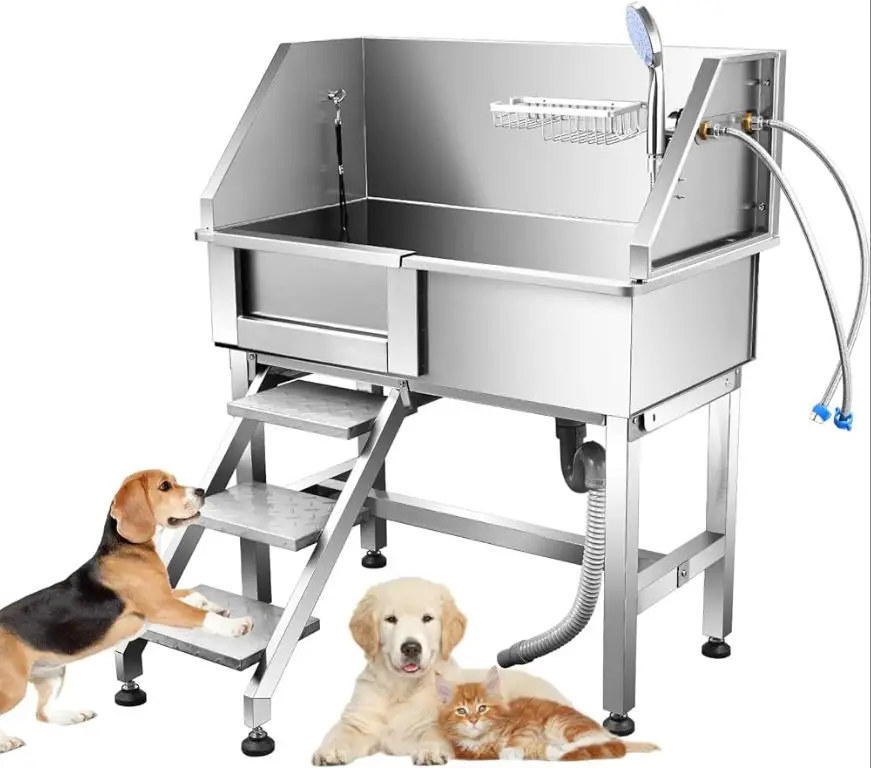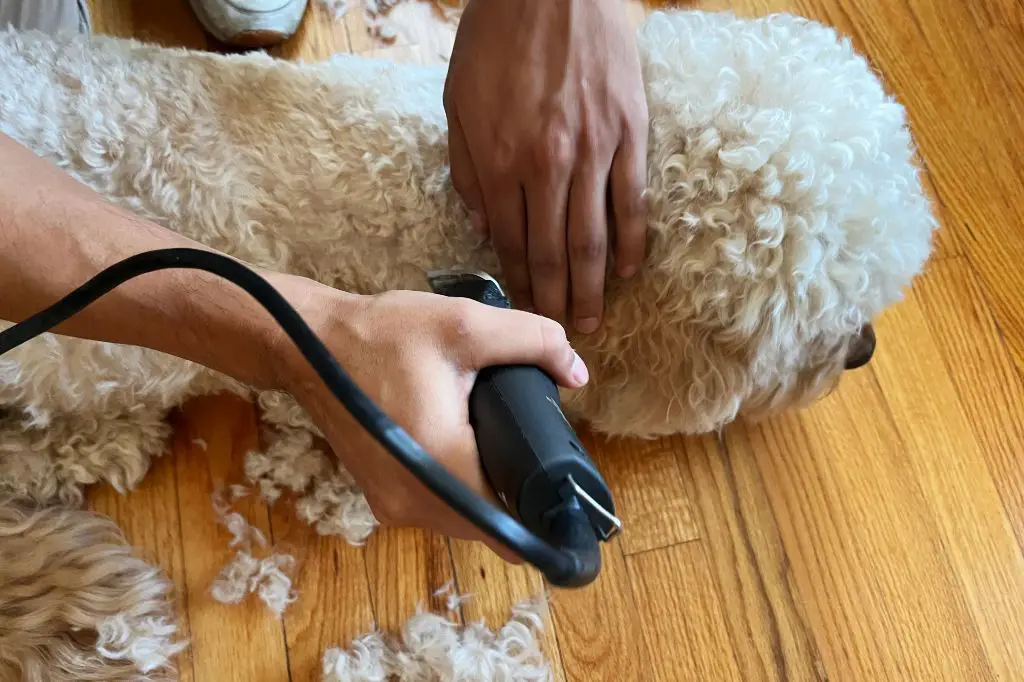Introduction
Starting a home-based dog grooming business can be a great way to turn your passion for dog care into a profitable venture. However, like any business, there are important legal and operational considerations before opening your doors. One key question aspiring home groomers have is whether they need to acquire a license or permit to legally run their business.
The short answer is – it depends on your location and local regulations. While rules vary, most jurisdictions require dog groomers to obtain a general business license at minimum. However, specialized permits related to zoning, health codes, and waste disposal may also apply. Additionally, independent contracting rules, insurance requirements, and equipment regulations can factor in.
This article provides an overview of the most common licensing and permit requirements for home dog grooming businesses across the United States. It aims to help you understand the key regulations you must follow to legally and safely operate your business.
Benefits of Starting a Home Dog Grooming Business
Launching a dog grooming business from your home offers some clear advantages over renting commercial space. Operating out of your home allows for more flexibility, lower overhead costs, and potential tax deductions.
As a home-based business owner, you can set your own hours rather than keeping regular salon hours. You can work around your personal schedule and take time off when needed without having to keep the business open. This flexibility allows for a better work-life balance.
A home dog grooming business also saves significantly on real estate costs compared to leasing retail space. Your overhead expenses are lower without monthly rent or mortgage payments on a separate commercial property. Any renovations or upgrades to your home for the business can often be deducted on your taxes as well.
Speaking of taxes, a portion of your mortgage interest, rent, utility bills, home repairs, and renovations for your home office can potentially be written off as business expenses. Setting up your dog grooming operation at home provides opportunities for deductions that lower your overall tax burden.
With the reduced costs and added tax benefits, operating your mobile or home-based dog grooming business out of your residence can be an appealing way to get started. The financial savings allow you to retain more of your hard-earned profits as you build your local clientele.
Challenges of Running a Home Dog Grooming Business

Running a dog grooming business from your home comes with some unique challenges. Here are some key risks and difficulties to be aware of:
Noise and Disruption
The barking, clipping, and washing involved in dog grooming can create noise that may disrupt your neighbors, especially in dense residential areas. Operating during business hours may violate noise ordinances.
Increased Traffic
Dog owners coming and going from your home can increase traffic on your street and annoy neighbors. On-street customer parking could also become an issue.
Zoning Restrictions
Many residential zones prohibit operating certain businesses from home. There may be restrictions on signage, employees, commercial vehicles, and more. Make sure to check all local zoning laws.
Insurance Limitations
Standard home insurance policies often exclude or limit coverage for business activities on the property. You may need a special rider or commercial policy.
It’s important to carefully consider these potential challenges and plan ahead to minimize risks and disruptions. Talk to your local government and neighbors beforehand to understand all regulations and concerns.
Licensing Requirements
There are a few key licenses and permits you’ll need to operate a dog grooming business legally from your home. This includes:
Business License
Most cities and counties require you to obtain a general business license to legally operate any business within that jurisdiction. The cost and process varies, but expect to pay $25-$100 for an initial business license application.
Zoning Permit
Your local zoning department will determine if a dog grooming business is allowed under current home business ordinances. There may be restrictions on things like signage, number of customers, and waste disposal.
Tax Permits
You’ll need tax permits and IDs from state and federal agencies like the IRS and your Secretary of State’s office. Common requirements include a sales tax ID, employer ID, and business entity formation.
Professional Certification
While not legally required, earning a professional dog grooming certification demonstrates your skills and knowledge. It’s highly recommended for building credibility with customers.
Check with your city hall, county government office, and state licensing agencies to learn about all permitting and licensing requirements in your region.
Zoning and Business Regulations
When operating a dog grooming business from home, it’s important to be aware of zoning laws and business regulations in your local area. Many municipalities have rules about home-based businesses, known as “home occupation” ordinances. These are designed to limit disruptions in residential neighborhoods.
Some common requirements for home businesses include:
- Restrictions on signage and exterior alterations that make the home look less residential.
- Limits on the number of clients who can visit per day.
- Prohibitions on hiring non-resident employees.
- Regulations on noise levels and business hours.
With a dog grooming business, noise is a particular concern. Operating noisy equipment like clippers and dryers can prompt complaints from neighbors. Check your local noise ordinances to ensure you comply with permitted decibel levels at property lines.
Pet waste disposal is another consideration. You’ll need proper arrangements for disposing of dog hair, nails, and solid waste in accordance with local regulations. Composting or municipal trash service may have restrictions.

Additionally, many municipalities require business licenses for home-based businesses, especially those serving customers on-site. There also may be zoning permits, annual renewals, or inspections involved.
Doing due diligence on the rules in your area is important for operating legally and maintaining good relationships with your community and local government.
Home Insurance Considerations
Liability insurance is crucial for any dog grooming business operating out of a home. Professional liability and property damage coverage protects you if a dog is injured or causes damage while in your care.
Your homeowners insurance likely won’t cover business activities in your home. You’ll need to add endorsements to cover liability, property damage, and business equipment. This ensures you’re protected if there are any accidents or a dog bites someone on your property.
Additional insurance like care custody and control can cover you if a dog escapes or is lost while being groomed. Make sure your coverage accounts for the maximum number of dogs you may have on-site at any time.
Review all policy limitations and exclusions too. For example, certain breeds may not be covered. Your insurer can advise the best options to fully protect your new dog grooming business.
Dog Grooming Equipment
Proper dog grooming equipment is essential for providing quality service in a home-based dog grooming business. Investing in professional quality equipment will make the grooming process easier and more efficient. Here are some of the key pieces of equipment needed:
Grooming Table – A sturdy, adjustable grooming table allows you to raise and lower dogs to a comfortable working height. Look for tables with non-slip rubber tops and arm/nose noose to keep dogs safely in place.
Clippers – Clippers with sharp, well-oiled blades will make quick work of haircuts. Choose corded or cordless clippers powerful enough for heavy duty use. Also invest in clipper blades for different coat types and lengths.
Dryers – A high velocity dryer will efficiently dry a dog’s coat after bathing. Choose a dryer that allows you to control the airflow and temperature to suit different coat types.
Brushes – Slicker brushes, bristle brushes, mat splitters and combs allow you to thoroughly brush out coats. Stock brushes suitable for both long and short haired breeds.
Shampoos and Conditioners – High quality shampoos and conditioners made specifically for dogs will clean and condition their coat and skin. Choose scented and unscented varieties.
Nail Clippers – Invest in guillotine style or scissor clippers to humanely trim nails. Have styptic powder on hand to stop bleeding if you clip nails too short.
With the right professional quality equipment, you’ll be able to efficiently bathe, dry, brush, trim and style each dog that comes for grooming. Your equipment is key for providing an excellent grooming experience for your canine clients.
Business Operations

Your home dog grooming business’ success depends on how you set up and manage your operations. Here are some key considerations for running your business:
Scheduling
You’ll need to decide how to schedule appointments – will you take walk-ins or work by appointment only? Appointment-only allows you to manage your time better but limits flexibility. You may want to use an online scheduling system that allows clients to book appointments 24/7.
Pricing
Set your prices based on your experience level, the complexity of the grooming service, your operating costs, and competitive rates in your area. You may charge extra for difficult dogs. Offer packaged deals to encourage repeat business.
Marketing
Promote your business through your website, social media, local advertising, partnerships with pet stores/vets, and word-of-mouth referrals. Offer promotions and create a loyalty program. Ask happy customers to write online reviews.
Maintaining Quality and Reputation
When running a home dog grooming business, it’s critical to maintain high standards of quality and a stellar reputation. This comes down to three key factors – safety, cleanliness, and customer service.
First and foremost, safety should be your top priority. Make sure your home setup is secure and free of hazards. Dog-proof potential dangers like electrical cords, toxic chemicals, or sharp objects. Follow proper protocols for handling and restraining dogs during grooming. Always use extreme care when working with scissors or clippers near a dog’s face and sensitive areas. Never leave a dog unattended on a grooming table. Having a clean, safe environment will prevent injuries and build trust with clients.
Secondly, cleanliness is vital for quality grooming services. Thoroughly sanitize and disinfect all grooming equipment and surfaces between appointments. Properly dispose of fur clippings, nails, and other waste. Keep your home tidy and free of odors. Ask clients to schedule appointments so you have time to refresh your space in between. Maintaining a spotless grooming environment demonstrates your professionalism and care for your clients’ dogs.
Lastly, provide outstanding customer service to all clients. Greet them warmly, listen to their needs and preferences, and clearly communicate during the grooming process. Handle dogs with gentle care and patience. Educate clients on proper at-home grooming techniques. Follow up after appointments to ensure satisfaction. Building great relationships with dog owners will earn referrals and repeat business over the long run.
By making safety, cleanliness, and customer service your top priorities, you can deliver exceptional quality grooming from your home business. This will help earn five star reviews and recommendations that drive growth while avoiding potential issues or liability.
Keys to Success
Starting a successful dog grooming business from home requires passion, perseverance, and smart planning. Here are some of the keys to building a thriving home-based grooming operation:

Develop Your Skills
Invest in quality training to hone your grooming skills and knowledge of dog behavior, health and safety. Consider enrolling in courses and certification programs. Hands-on apprenticeships are also extremely valuable.
Create a Business Plan
Map out details like your services, prices, startup costs, and projected revenue. Outline your marketing strategy. Having a solid business plan is crucial.
Get Licensed and Insured
Make sure you have all required state and local licenses and permits. Liability insurance tailored to dog groomers is a must-have.
Invest in Good Equipment
Outfit your home workstation with high-quality essential tools like clippers, brushes, bathtubs, and drying stations. Keep equipment clean, sterilized, and in good repair.
Focus on Health and Safety
Follow protocols to keep the dogs under your care safe and healthy. Keep detailed records for each client dog. Stay up-to-date on pet first aid.
Provide Excellent Service
Go above and beyond to make the grooming experience relaxing and enjoyable for the dogs and their owners. Offer extras like blueberry facials.
Ask for Referrals
Satisfied clients can become your biggest promoters. Politely ask happy pet owners to recommend you to friends, neighbors, and social media followers.
With dedication and smarts, you can build a fulfilling and financially rewarding dog grooming business from home. Focus on skill development, savvy marketing, and providing top-notch service, and you’ll be on your way to success.